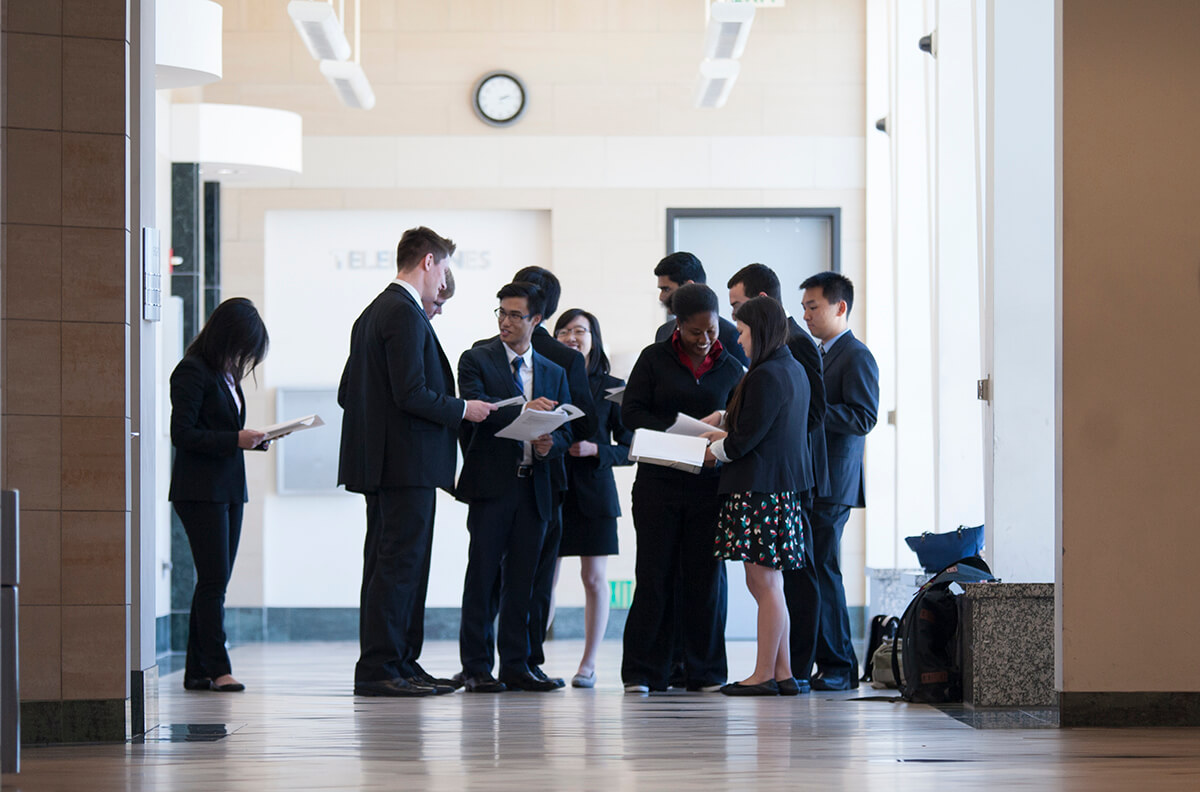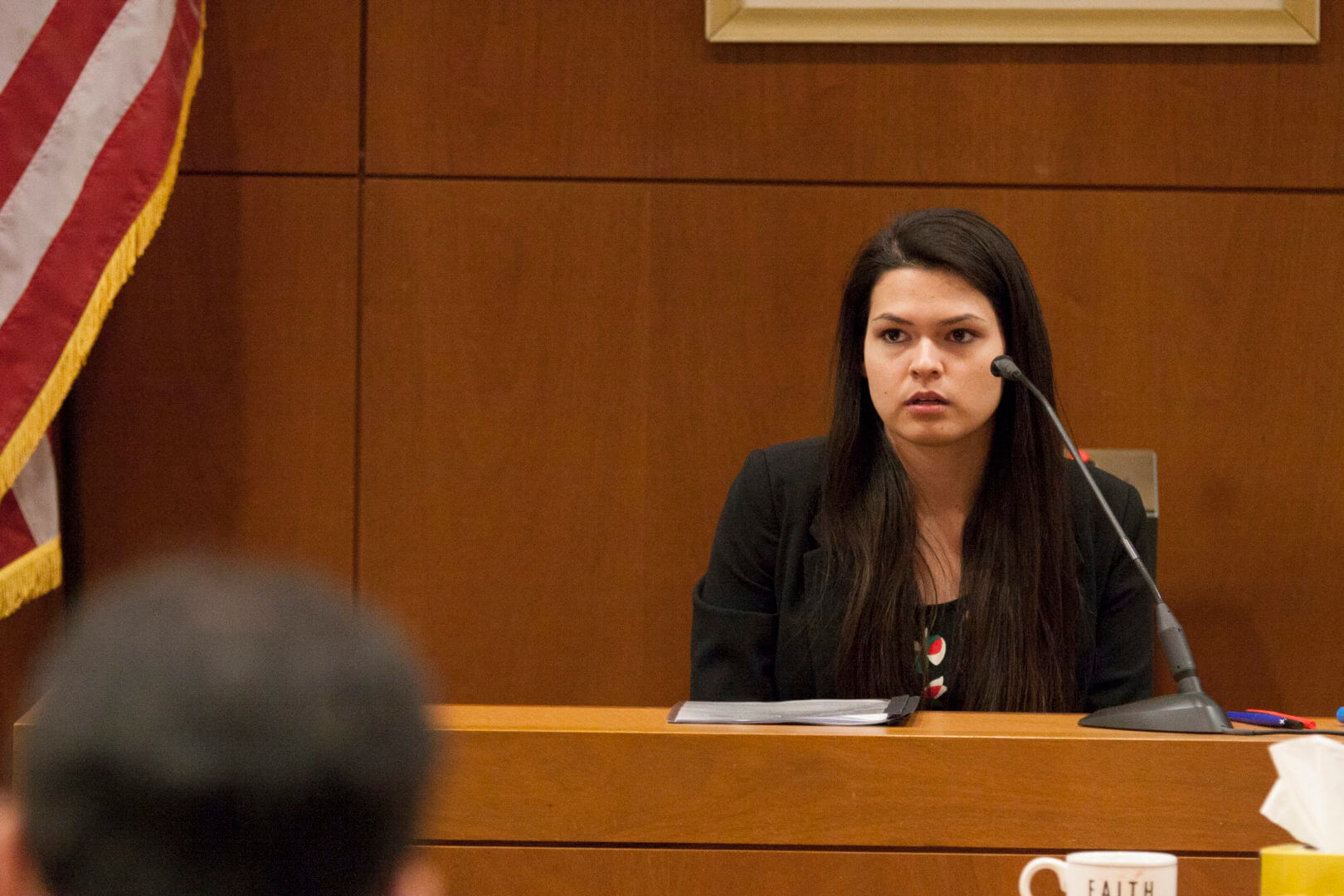Nothing but the Truth
Every year, with the aid of the Los Angeles District Attorney’s Office and the Los Angeles Superior Courts, Joseph Greenfield’s advanced digital forensics students participate in a moot court exercise in which they’re called to testify as digital forensics experts “under pains and penalties of perjury.”
Thirteen aspiring cybercrime investigators sat in the hot seat in late April in front of an audience of 40 industry professionals representing the Secret Service, FBI, the district attorney’s office, IBM and various law firms.
“No pressure, right?” laughed Sean Straw, a senior in computer engineering, as he waited to be summoned into the courtroom, his nervous hands digging into his pockets.
The mock trial simulated the real-world experience down to the smallest detail. Students were not allowed to hear each other’s testimony and had to stay in the hallway waiting for the door to swing open and their names to be called.
Before they got to crack iPhones, computers and networks, the students had to face Special Agent Jack Furay of the U.S. Secret Service, questioning them for the defense, and L.A. Deputy District Attorney Benyomin Forer for the prosecution. The students, for their part, had to pull quickly from a fountain of digital forensics knowledge accumulated in two courses over the span of a year.
“It’s part of their grade, so there’s no escaping the trial,” said Greenfield, who has been teaching digital forensics for 10 years as part of USC Viterbi’s Information Technology Program and has opened the class to majors outside engineering.
In the courtroom, computer science junior Rochelle Willard gave a “CSI”-like report about how she extracted digital evidence about illicit activity from the defendant’s computer.
“A lot of what we did in class dealt with stabilizing and recovering data from digital media, then connecting the dots to the perpetrator,” said Willard, who interned at Facebook in Massachusetts over the summer.
Willard acknowledged that one of the most important roles of the digital forensics expert is making “darn sure” the incriminatory information in the hands of investigators and prosecutors points to the right person. Forensic evidence can save the life of the wrongfully accused or seal a fate with incontrovertible proof against a defendant.
Willard, who is not exactly planning to become the Dana Scully of cybercrime — “I love programming too much,” she confessed — still believes a course in digital forensics helps any student serious about computer science.
“In terms of understanding the security infrastructure that goes into both software and hardware, this is by far the best class I’ve taken,” said Willard.
Class alumni were also on hand acting as both supporters and talent scouts.
“This class is near and dear to my heart,” said Joel Garrison, B.S. ’13, who majored in political science and digital forensics and is now a senior security consultant at Ernst & Young. “It launched me professionally. So I’m here to support my fellow Trojans and check out the talent.”
With cybercrime on the rise, Garrison noted that there is demand for this kind of expertise. In 2015, IBM conducted an independent investigation that revealed 1.5 million cyberattacks hit the internet every year. That number means there are more than 4,000 cyberattacks every day, or 170 attacks every hour.
Microsoft has already created its own Digital Crimes Unit in light of a recent breach barrage that has hit the health care, financial, higher education and federal markets and even the security industry itself. The research firm MarketsandMarkets estimates that by 2017 the global cybersecurity market will skyrocket to $120.1 billion.
It’s no surprise that more USC students are responding to this challenge.
“I designed my own curriculum,” said Kshitij Kumar, a junior studying international relations, digital forensics and enterprise information systems. “I love this course. We get to practice the theory with so many cases thrown at us. The second day of class, we got our first case. It’s been the most fun I’ve had in the last three years of studying at USC.”







